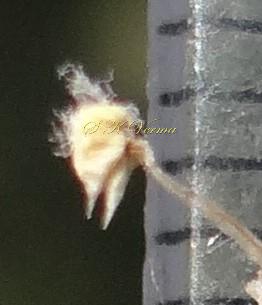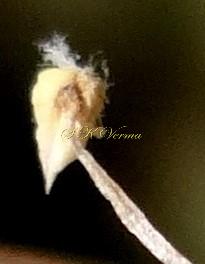OROBANCHE
Orobanche
L., Sp. Pl. 2: 632. 1753; Gen. Pl. 5: 281. 1754; Boiss, Fl. Or. 4: 502; 1879; Hook. f., Fl. Brit. India 4: 324. 1885; Beck, Monogr. Orob. 73. 1890; Graham in Turnill & Milne- Redhead, Fl. Trop. E. Afr. (Orobanchaceae) 3: 1957; Cooke, Fl. Pres. Bomb. 2: 386. 1958 (Reprint ed.); Fl. China @ eFloras.org 18: 231; Fl. Pak. @ eFloras.org p. 6; Kopsia Dum., Comm. Bot. 16. 1822; Phelipaea Desf., Ann. Mus. Par. 10: 298. 1807.
Herbaceous root parasites, scapigerous, devoid of chlorophyll, often fleshy, tomentose, villous or glandular pubescent. Leaves alternate, scaly, ovate, ovate-lanceolate or lanceolate. Inflorescences terminal, bracteate, racemes or spikes, rarely 1-flowered. Flowers bisexual, zygomorphic, hypogynous, sessile or subsessile, bracteate. Pedicel short or absent. Bracts scale-like leaves but usually somewhat smaller than leaves; bracteoles, if present, 2, nearly as long as calyx, free, rarely adnate to calyx tube. Calyx usually campanulate, 4(-5,6)-toothed or lobed, or split into 2 lateral segments to base, each entire or toothed, shorter than corolla. Corolla campanulate, funnelform to almost tubular, 2-lipped: upper lip +/- 2-lobed, often erect, lower lip 3-lobed, shorter to longer than upper lip. Stamens 4, didynamous, included, inserted in corolla tube about middle or below; filaments base pubescent or glandular- pubescent; anthers bithecous, thecae equal, often minutely mucronate at base. Ovary unilocular, parietal placentas 4, ovules numerous; style elongated, usually persistent; stigma inflated, peltate or 2-4 lobed. Capsule ovoid-globose or ellipsoid, beaked by persistent style base, dehiscing by 2 valves. Seeds numerous, minute, ellipsoid or subglobose.
199 species
Orobanche aegyptiaca
Orobanche aegyptiaca
Pers., Syn. Pl. 2: 181. 1807; Cooke, Fl. Pres. Bomb. 2: 387. 1958 (Reprint ed.); Stewart, Ann. Cat. Vas. Pl. W. Pak. & Kash. 671. 1972; Fl. China @ eFloras.org 18: 234; Fl. Pak. @ eFloras.org p. 8; O. indica Buch.-Ham. ex Roxb., Fl. Ind. 3: 27. 1832; Hook. f., Fl. Brit. India 4: 326. 1885; Phelypaea aegyptiaca (Pers.) Dumort., Comment. Bot.:18.1822; P. indica (Buch.-Ham.) G. Don, Gen. Hist. 4: 632. 1838.
Annual, herbaceous, root-parasite (on roots of Lepidium didymium (=Coronopus didymus), ca. 15 cm tall, fleshy, devoid of chlorophyll, usually glandular-pubescent. Stem often regularly branched from below with elongated branches. Leaves scaly, distant, 8-12 mm x 2-4 mm, ovate-lanceolate, pubescent to glabrescent. Inflorescence terminal spike, up to 10 cm long, lax, with lower flowers distantly placed. Flowers bisexual, zygomorphic, hypogynous, 2+ cm long, sessile or shortly pedicellate, pedicel ca. 4 mm long. Bracts +/- similar to scaly leaves, ovate-oblong, ovate-lanceolate or lanceolate, 6-10 mm x 3-4 mm, apex acuminate, dark brown, pubescent. Bractlets (Bracteoles) 2, linear, 6-10 mm long, adnate on calyx tube. Calyx 10-13 mm long, campanulate, pale yellow or white, 4-5-lobed with lobes subequal and +/- as long as tube, lobes linear-lanceolate, 4-6 mm, glandular-pubescent. Corolla ca. 2+ cm long, funnelform, glandular pubescent, 2-lipped, whitish below and blue or lilac above; tube slightly curved and broader above, constricted below the middle and at the insertion point of stamens; upper lip short, shallowly 2-lobed, erect; lower lip +/- equally 3-lobed with +/- acute apex, 2 median elongated ridges, densely glandular-pubescent, margins very minutely denticulate to almost entire. Stamens 4, didynamous, included, inserted in nearly middle of corolla tube; filaments 3-4 mm long, filiform, pubescent at base; anthers bithecous, thecae equal, apiculate at base, thecae woolly at upper end. Carpels 2, syncarpous, pistil ca. 2 cm long; ovary superior, 5-6 mm long, shallowly 4-lobed, unilocular, 4 parietal placentas with many ovules; style slender, ca. 1.2 cm long; stigma capitate, bilobed.
Capsule oblong, 0.8-1.2 cm x ca. 6 mm. Seeds long, ovoid, 0.4-0.6 mm x ca. 0.2 mm. (Fruit not observed)
Common Names: Egyptian Broomrape
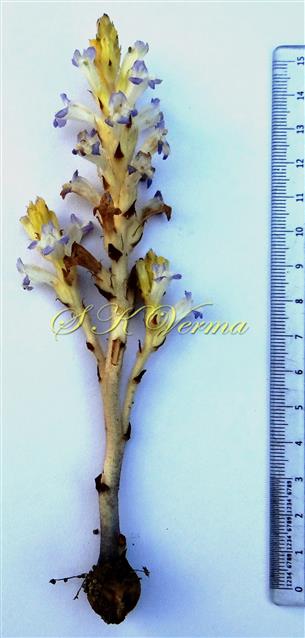
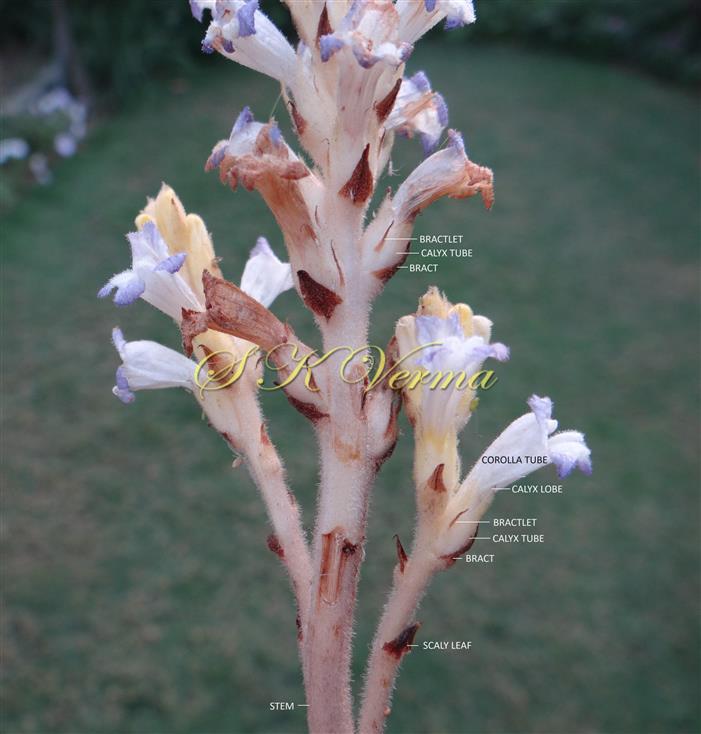
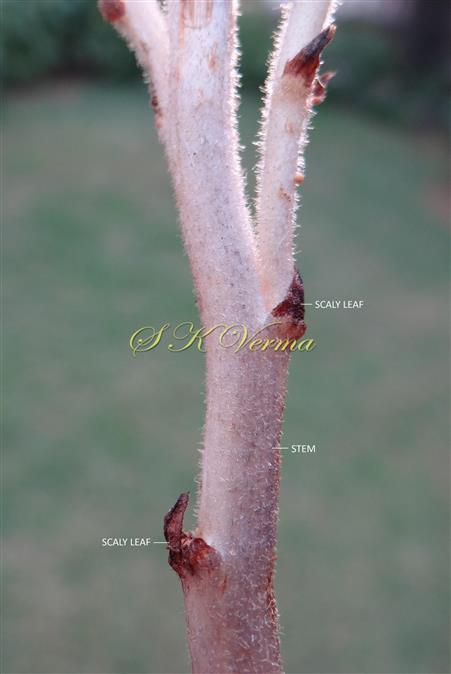
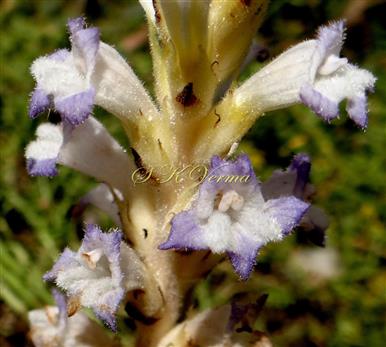
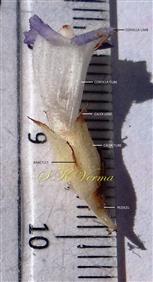
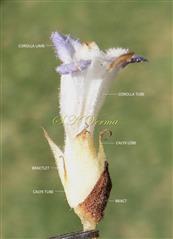
-DSC07399.jpg)
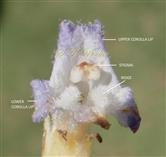
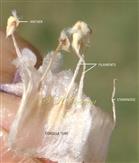


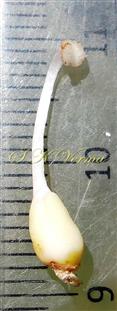
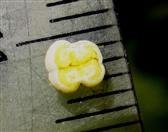







-DSC07399.jpg)


